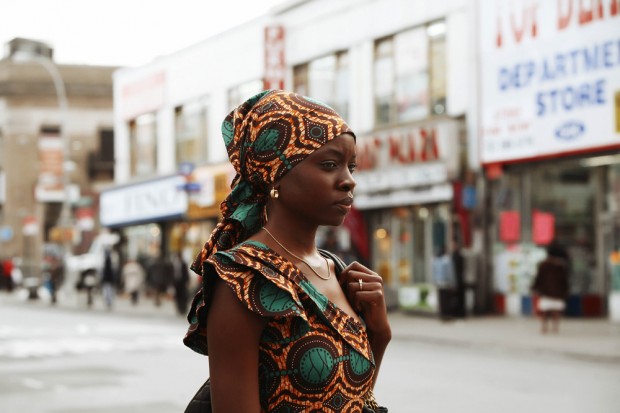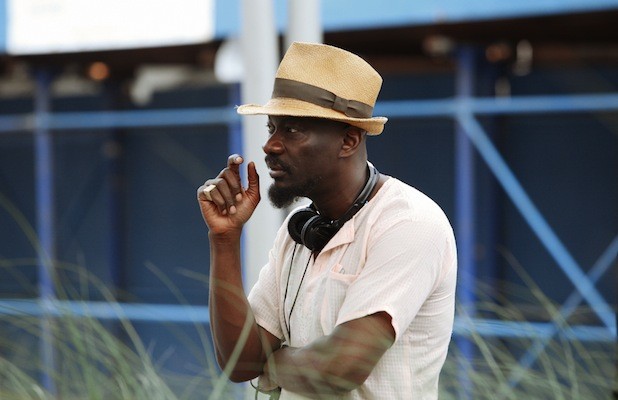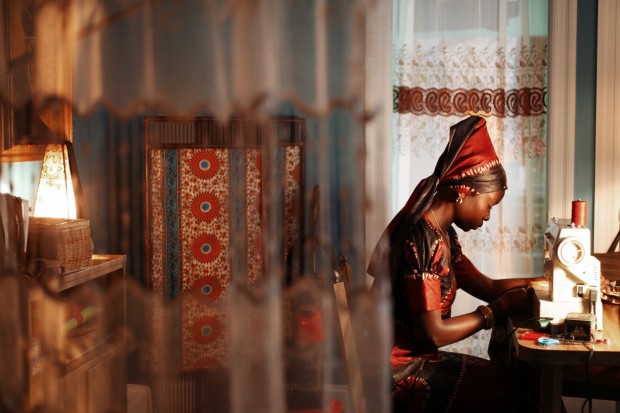
Fertility is a cruel beast. By now, science has progressed to the point where we can understand what can keep us from having offspring or not. But in cultures that have yet to embrace the advancements of science, they can cause some tremendous pain. Enter Mother of George, a film about the struggles of a Nigerian couple in America. I recently had the chance to talk with that film’s director, Andrew Dosunmu, to talk about how all the actors wanted to learn to cook the African food, why they eat with their hands, how he connected with this material, working with actors from his first film, and much more.
The Film Stage: This film is, obviously, about Nigerian culture and the transfer from there to the U.S. and how they keep their culture together; I noticed they eat with their hands. How did you decide which elements to include and is there anything you didn’t?
Andrew Dosunmu: Yes, I’m just trying to be respectful to the culture. It’s so mundane, it’s an everyday [thing]. I didn’t make the mundane magnificent. He eats with his hand because the culture eats with their hands, cause they believe cutlery is just a distance between you and your food. To use your hand to feed yourself, it’s like going into the soul. Cutlery in between you, for them, it’s upsetting. That’s the culture, that’s how he really eats. He owns a restaurant and the restaurant has cutlery and everything, but if he eats, he uses his hand.
On the subject, this film very much revolves around food. The couple owns a restaurant and cooking is constantly seen. I’m curious how much of that cooking was actually being done…
It’s amazing that you brought up that question because the actors insisted on cooking the food. They wanted to go through it. It’s amazing because Isaach felt like he could not play that part if he didn’t know the stages, the steps of what it takes to go through it. It was really interesting, because I was like, “Oh my, this is going to take so long.” They really wanted to do it, which gave it that magic. It amazing to see them go through that process, opening the can, frying, pounding the ham — it’s what they went through. They insisted on that. I wanted to have it ready, but they said, “hell no.” [laughs]
I was wondering, with craft services, did you try and mix it up with that African food?
I think most of the craft food was really the food you saw in the film. Half of the crew was like, “this is spicy and I can’t eat this,” but pretty much we all fed on most of the food in the film, the same kind of cuisine, apart from the coffee. [laughs]

This is your second narrative feature, but you’ve had some bleed-over from your actors in Restless City. Is there immediately a familiarity with the actors that you can push beyond compared to someone completely new?
Oh, totally. Someone like Danai Gurira wasn’t in my mind when I was casting this. I used her for Restless City, but I wasn’t even looking at her for Mother of George. Working with her in Mother of George actually reaffirmed something and after that, I insisted that there’s nobody else that could play this part but her, because we developed a language and we’re able to communicate silently. For me, it’s a challenge that my actors bring that excites me, the magic that they bring. What’s great about it is you are in a collaborative state where you can all be artists and I’m into that — that’s what fascinates me. How do I create that space?
I talk with a lot of directors about the normal casting process and this broken system where it’s hard to tell who is going to be collaborative, who is going to be throwing themselves into this role, based on just a couple of lines being read. What’s your take on the casting process and how you find collaborators, not just actors.
For me, the casting process begins way before I make a film, way before I even know what I’m doing or what my next project is. It’s me knowing that I’m attracted to this artist, based on their body of work. You’ve seen what their body of work is like and you’ve seen what they’ve done and you just feel it. I think that’s what it is. It’s not them coming into this room and reading a line. The way I prepare with actors, I’m not interested in sitting down on a couch and read lines. I want to go out with you, I want us to go to flea markets together. I want to go to the market and buy tomatoes together. I want to go to concerts together.
This is for me my research process, or my rehearsal process. That’s how I rehearse actors. I spend time with them. I’m not interested in sitting over dinner in a restaurant, no. Let’s get on the subway and go a flea market in the Bronx, you know? Spend half of the day together. Because you can invite them into your world and expose them to the world you want them to be in. That’s, for me, my casting process. Are they willing to spend that time with me? And I think, as an artist, if you really want to work with somebody, you want to explore their mind and you want to hear what they’ve got to say. And that’s the difference between artists and actors, it’s two different things. And I like to work with artists.
On that note, you haven’t written your two feature films. Are the writers on set? If they are, what is that collaborative process like?
On my first film, the writers were not on set, which was dumb. It was nonsense. On my second film, they were pretty much on set, half of the time. They come and go. The beauty of that is that, when we’re collaborators we can make up things instantly. It might not be working, but she could up with something, just to have that person around. Or even just have elimination, because there’s not enough time, [asking] “what do we really need?” For me, it’s been beautiful in that sense, but that’s because the collaborations I’ve had have been organic and great collaborations.
This film seems very personal. Could you give us any background on what you connected with?
For me, what’s personal is that it’s about displacement. It’s about the consequences and the dilemma of displacement. If she was at home, where she comes from, there would still be extended family, all that, to help her and guide her. But when you’re an immigrant, it’s very much solo. For these immigrants, this is home for them. They are American, this is where they want to be. So those dilemmas and those conflicts, I can understand very much. Our story, it’s not personal to me, but my writer, Darci Picoult, she’s from New York, from America. It’s where she lives, it’s what she knows, and the fact that she can relate to that story as a woman, because she could not bear kids and she had to adopt, it’s very personal to her. So it’s coming from that place, for her, as a woman, and understanding that. So I think in that sense it’s personal to both of us in different ways. That’s why it is what it is and the characters are not caricatures. It feels deep, it doesn’t feel melodramatic. It feels like it comes from a deep place and a beautiful place.

Mother of George is now in limited release.

